Air Spring for Car
AIRSPRINGO air spring systems offer over 500 product lines worldwide, covering almost all commonly used air spring models for trailers, trucks, and buses. The products are guaranteed to meet the highest quality standards while also complying with the specifications of vehicle manufacturers active in the aftermarket.————Air Spring for Trailer Axles are components used in the suspension system of trailers to provide cushioning and support. They help absorb shocks and vibrations from the road, ensuring a smoother ride and improving stability. These air springs allow for adjustable load capacities, enhancing the performance of trailers under varying conditions. They are commonly used in heavy-duty trailers, ensuring better weight distribution, reduced wear on other suspension components, and improved overall vehicle handling.
Air Spring for Car
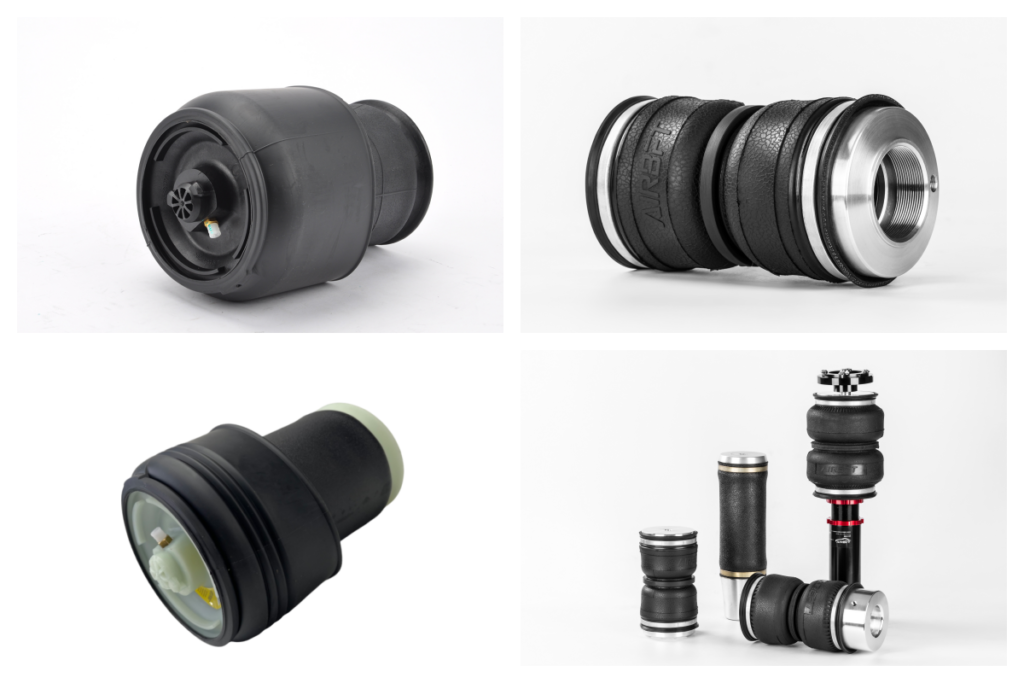
Frequently Asked Questions
What are the benefits of using Air Spring for Cars?
Using air springs in cars provides numerous advantages over traditional suspension systems, particularly in terms of ride quality, handling, and adaptability. Air suspension systems utilize airbags (often made of rubber or composite materials) that can be inflated or deflated to adjust the ride height and damping characteristics. Here are the key benefits of using air springs for cars:
1. Improved Ride Comfort
- Smooth Ride: Air springs offer a much smoother and more comfortable ride compared to traditional steel springs. The airbag compresses and absorbs road shocks, reducing the impact of potholes, speed bumps, and other road irregularities.
- Reduced Vibrations: Air springs help minimize vibrations transmitted from the road to the vehicle, which leads to a quieter, more refined ride experience for passengers.
2. Adjustable Ride Height
- Customizable Ride Height: Air suspension systems allow drivers to adjust the ride height of the vehicle based on preferences or specific driving conditions. This can be particularly useful for varying terrain, such as off-roading or navigating speed bumps.
- Improved Clearance: Drivers can increase the vehicle’s clearance when driving over rough terrain or obstacles, helping to avoid undercarriage damage. For urban driving, the ride height can be lowered to improve aerodynamics and handling.
- Automatic Adjustments: Many modern air suspension systems automatically adjust the ride height based on load, driving conditions, and speed to ensure the vehicle remains at an optimal height for comfort and performance.
3. Enhanced Handling and Stability
- Reduced Body Roll: Air springs improve the stability of the car by minimizing body roll, especially when cornering or making sharp turns. This helps maintain better control and driver confidence, especially at higher speeds.
- Leveling the Vehicle: Air springs help to level the vehicle, especially when the car is carrying a heavy load or towing a trailer. This ensures that the car’s suspension remains balanced and that the ride height remains consistent.
- Improved Cornering: By providing a more controlled and responsive suspension, air springs enhance the car’s ability to corner smoothly and evenly, reducing the risk of losing traction or stability during tight turns.
4. Load-Adaptability
- Compensates for Load Changes: One of the biggest advantages of air suspension is its ability to automatically adjust to changes in load. When carrying heavy luggage or passengers, the system can increase the air pressure to maintain the ride height, preventing the vehicle from sagging and ensuring consistent handling.
- Maintains Comfort with Heavy Loads: Unlike traditional coil or leaf spring systems, air springs automatically adapt to the vehicle’s weight, providing a stable and comfortable ride even when fully loaded or towing heavy equipment.
5. Improved Towing Capacity
- Support for Heavy Loads: Air springs are especially beneficial for vehicles used for towing, such as SUVs, trucks, and vans. They help maintain ride height and prevent sagging when towing trailers, boats, or heavy loads, thereby improving towing capacity and safety.
- Enhanced Stability While Towing: By leveling the vehicle when towing, air suspension helps improve stability and control, reducing sway and keeping the vehicle’s alignment correct. This makes towing easier, safer, and more predictable.
6. Better Control in Varied Driving Conditions
- Off-Road Capability: Many off-road vehicles and SUVs use air suspension to adjust their ride height for improved ground clearance when navigating rough terrain. This is crucial for driving on rocky, uneven, or sandy surfaces, as it allows the vehicle to maintain better traction and avoid damage to the undercarriage.
- Adaptation to Road Conditions: Air springs are adaptive to different road conditions. For example, a vehicle can have a firmer suspension for high-speed highway driving and a softer suspension for off-road or low-speed city driving, offering a dynamic driving experience tailored to specific environments.
7. Reduced Wear and Tear on Other Components
- Protection for the Chassis: Air suspension reduces the stress on the car’s chassis, tires, and other suspension components by absorbing more of the shock and impact from the road. This leads to less wear and tear on the car, extending the lifespan of these components.
- Less Strain on the Tires: Since air springs adjust to provide a smoother ride, there is less impact on the tires, which can reduce the risk of tire wear and improve their longevity.
8. Quieter Ride
- Reduced Noise and Vibration: Air suspension reduces the transmission of road noise and vibrations through the vehicle’s frame, creating a quieter cabin environment. This can be particularly noticeable when driving on highways or long-distance trips, where road noise is usually more prominent.
- Comfort for Passengers: Air springs help in reducing the discomfort caused by road noise, making the ride more pleasant for passengers, especially on long journeys.
9. Enhanced Aesthetics and Design Flexibility
- Lower Ride Height for Aesthetic Purposes: For performance and sports cars, lowering the vehicle can enhance the vehicle’s stance and aerodynamics. Air springs offer flexibility in ride height adjustment for better looks, especially in luxury and performance vehicles.
- Sleek Design: The air suspension system itself is compact and can be integrated discreetly into the vehicle’s design, freeing up space for other components and reducing the complexity of traditional suspension systems.
10. Energy Efficiency
- Lightweight Design: Air springs, compared to traditional coil springs or leaf springs, are generally lighter and contribute to a reduction in the overall weight of the vehicle. This can lead to improved fuel efficiency, as the vehicle requires less energy to operate.
- Lower Rolling Resistance: As air springs help maintain optimal ride height and suspension settings, they can reduce friction between the tires and the road, contributing to better fuel efficiency.
11. Reduced Maintenance Costs
- Fewer Mechanical Components: Air suspension systems typically have fewer moving parts compared to traditional mechanical suspension systems, reducing the likelihood of breakdowns and mechanical failures.
- Longer Component Life: The increased durability and reduced stress on the vehicle’s suspension components can help extend the lifespan of other parts, reducing the frequency of repairs and maintenance.
Conclusion:
Air springs offer numerous benefits for cars, including enhanced comfort, improved handling, load adaptability, better towing capacity, and reduced wear on suspension components. Whether in luxury vehicles, off-road SUVs, or cars used for towing, air suspension provides a customizable and smooth driving experience tailored to various conditions and load requirements. It significantly enhances ride quality, making it a popular choice in both premium and performance vehicles, while also contributing to long-term cost savings by reducing maintenance and increasing the durability of key vehicle components.
How Many Types of Air Springs Used in Cars?
Rubber Air Springs
- Description: Commonly used, made from rubber, offering good elasticity and durability.
- Application: Used in most vehicles like luxury cars, SUVs, and crossovers for better ride comfort.
Composite Air Springs
- Description: Made from rubber and other composite materials, stronger and more durable.
- Application: Used in high-performance or heavy-duty cars that need higher load capacity and durability.
Dual-Path Air Springs
- Description: Two air bags used for more precise air adjustments and suspension control.
- Application: Common in luxury cars and SUVs for superior comfort and stability.
Air Spring Bags
- Description: Simple air bags made of rubber that adjust air pressure for weight support.
- Application: Used in standard vehicles or cars that don’t require advanced features.
Vertical Air Springs
- Description: Designed to operate in a vertical direction for high-performance vehicles.
- Application: Used in sports cars or vehicles requiring precise height control.
Self-Adjusting Air Springs
- Description: Automatically adjust air pressure based on load and road conditions.
- Application: Found in high-end cars or vehicles used in different terrains.
Independent Air Spring Systems
- Description: Each wheel has its own air spring, offering better stability and control.
- Application: Used in high-performance sports cars and luxury models for precise handling.
Air Springs with Shock Absorbers
- Description: Air springs combined with shock absorbers for better ride quality and handling.
- Application: Typically used in performance cars and luxury vehicles for enhanced comfort and stability.
Simple English Summary:
Air springs in cars come in different types, each suited for various needs like ride comfort, load adjustment, and handling. Rubber air springs are the most common, used in luxury cars and SUVs. More advanced types, like composite or dual-path air springs, are used in high-performance or heavy-duty vehicles. Some systems automatically adjust based on conditions, while others focus on precise suspension control for improved driving experience.
What are the applications of the air spring used in cars?
Air springs used in cars have various applications that enhance ride quality, handling, and overall vehicle performance. Here are the main applications of air springs in cars:
1. Luxury Cars
- Application: Air springs are commonly used in luxury vehicles to provide a smooth and comfortable ride by absorbing road imperfections.
- Benefits: They help maintain a stable ride height, ensuring a consistent and luxurious driving experience. Air suspension also improves noise isolation, making the cabin quieter and more serene.
2. SUVs and Crossovers
- Application: Air springs are popular in SUVs and crossovers to improve ride comfort, especially on rough or uneven terrain.
- Benefits: They offer adjustable ride heights, allowing drivers to raise the vehicle for better ground clearance or lower it for better aerodynamics and stability at high speeds.
3. Performance Cars
- Application: High-performance sports cars often use air springs for precise suspension control to improve handling, cornering, and overall driving dynamics.
- Benefits: Air springs allow for more flexible tuning of the suspension, offering better control over vehicle height and ride stiffness, which enhances performance during aggressive driving.
4. Off-Road Vehicles
- Application: Off-road vehicles benefit from air suspension systems that allow for adjustable ground clearance based on terrain.
- Benefits: Air springs can be inflated or deflated to provide extra clearance over obstacles like rocks or uneven surfaces, improving traction and reducing the risk of underbody damage.
5. Towing Vehicles
- Application: Air springs are used in vehicles that frequently tow trailers, boats, or other heavy loads to maintain vehicle stability.
- Benefits: When towing, the air suspension automatically adjusts to compensate for the additional weight, helping to maintain the vehicle’s level stance and improve stability during towing.
6. Electric and Hybrid Vehicles
- Application: Air springs are also found in some electric and hybrid vehicles to provide a smooth and quiet ride while maintaining efficient energy use.
- Benefits: They help reduce road noise and vibrations, contributing to the quiet and comfortable experience typical of electric or hybrid cars.
7. Motorhomes and Camper Vans
- Application: Motorhomes or camper vans, which are typically heavy and carry varying loads, use air suspension to keep the vehicle level.
- Benefits: Air springs can be adjusted to handle different load conditions, ensuring that the vehicle remains stable and comfortable when fully loaded with passengers, cargo, and equipment.
8. Taxi and Limousine Services
- Application: Air springs are used in taxis and limousines to improve comfort for passengers, especially for vehicles that spend long hours on the road.
- Benefits: They provide a smooth and stable ride, reducing the wear on the body and ensuring passenger comfort during extended trips.
9. Buses (Including Small and Medium-Sized)
- Application: While typically seen in larger buses, air springs can be used in smaller and medium-sized passenger vehicles to provide comfort and stability for both short and long-distance travel.
- Benefits: Air springs help reduce the impact of road conditions, improve ride stability, and ensure the vehicle remains level, even with a varying number of passengers.
10. Heavy-Duty Vehicles (e.g., Trucks, Vans)
- Application: Air springs are sometimes used in light-duty trucks and vans that carry heavy payloads or need to maintain stability when heavily loaded.
- Benefits: The air suspension system helps compensate for varying loads, ensuring the vehicle maintains a proper ride height and improving stability and control.
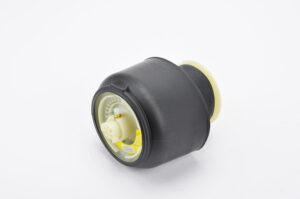

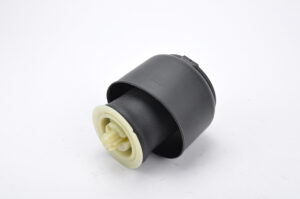
Do Not Exceed the Recommended Safe Extended Height: When installing or using an air spring, ensure that it is not extended beyond the recommended height. Exceeding this height could lead to excessive strain on the air spring, resulting in damage or reduced performance over time. Always follow the manufacturer’s guidelines regarding the safe extended height for proper operation.
Avoid Using Below the Minimum Compressed Height: To prolong the lifespan of the air spring, it is crucial not to operate it below its minimum compressed height. Operating below this threshold can cause the rubber bladder to become overstretched, leading to premature wear and potential failure. Ensure the air spring is within the correct compression range during use.
Do Not Use at a Pressure Exceeding 0.7 MPa: The air spring must be operated within the specified pressure limits to maintain optimal performance and safety. Exceeding a pressure of 0.7 MPa could lead to over-stretching of the air spring, compromising its structural integrity. Always check and regulate the air pressure according to the manufacturer’s recommendations.
Avoid Twisting the Air Spring: During installation and use, it is important to avoid twisting the air spring. A twisted air spring can lead to uneven distribution of air pressure, causing internal damage or even failure. Make sure the air spring is installed in a straight and aligned position to ensure proper function and durability.
- The air spring for trailer axles are typically available in stock.
- The air springs manufactured by Shanghai Songjiang meet national standards and come with a one-year warranty. Any quality issues can be exchanged within this period.
- There is no purchase quantity limit. Small orders are generally shipped via international couriers such as DHL, FEDEX, UPS, TNT, etc., ensuring fast delivery, usually within 3-7 business days.
Air Spring for Cars Model List:
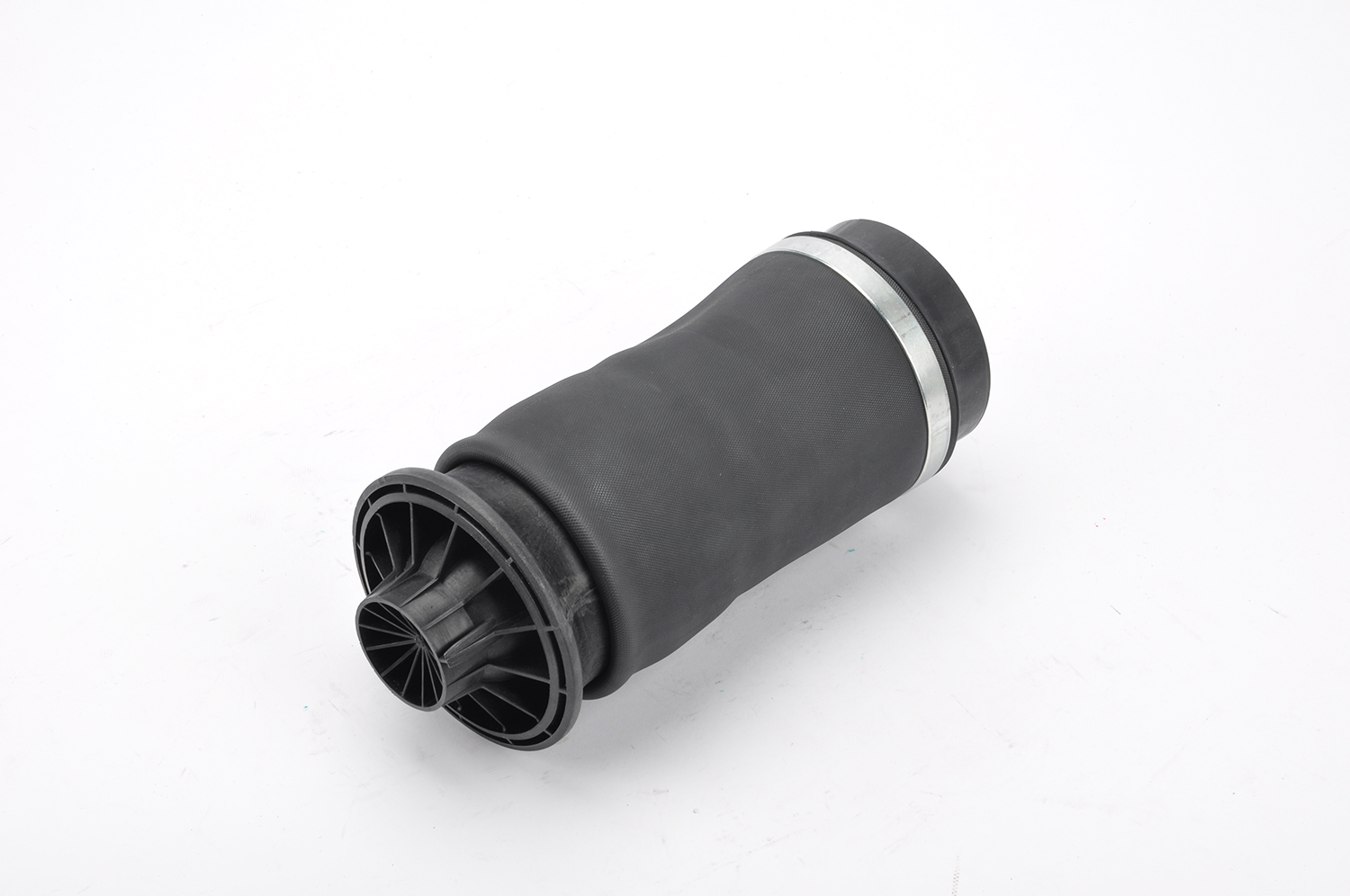
Mercedes Air Suspension
Models:
1C4025
1C4026
1C4027
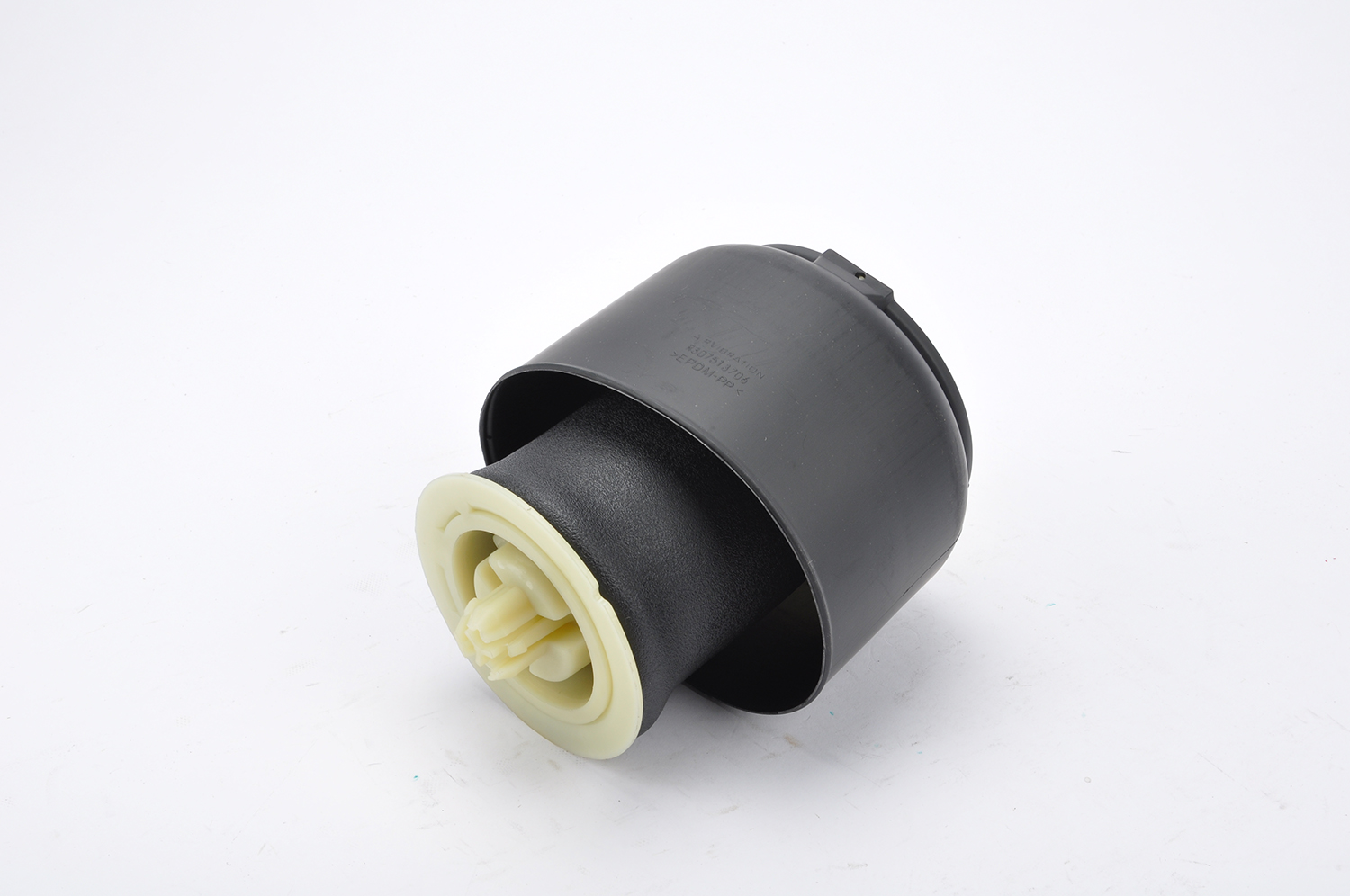
BMW Air Suspension Parts
Models:
1c3824
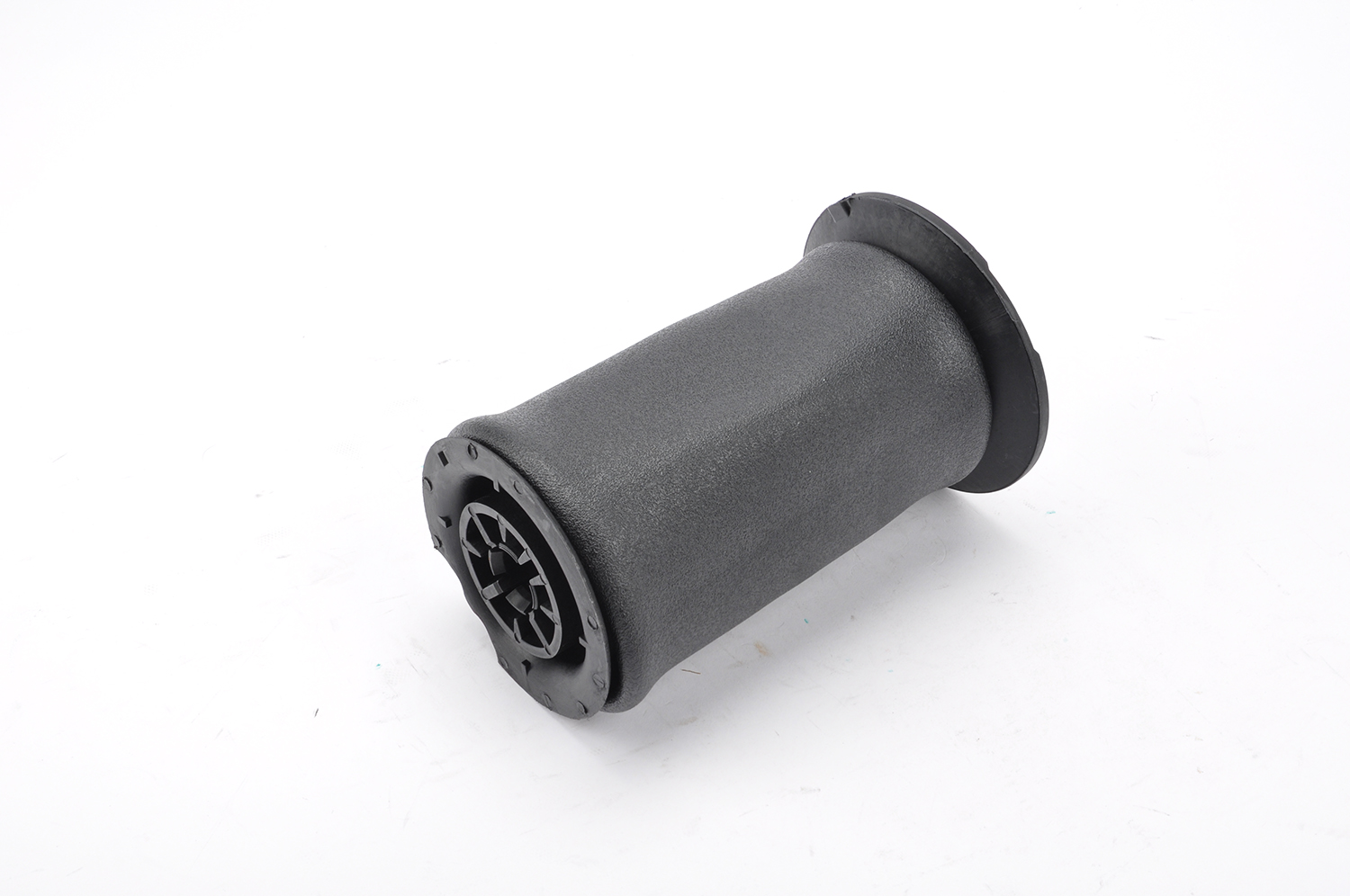
BMW Air Suspension Parts
1C3820

BMW Air Suspension Parts
1c3826

